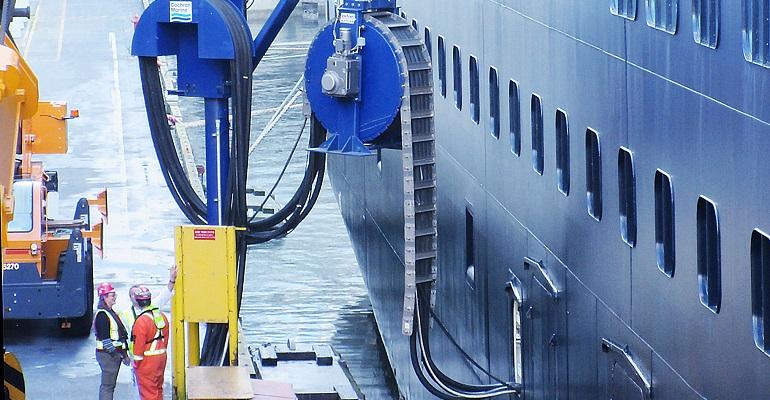Described as ‘low-hanging fruit’ by one emissions specialist, the use of shore power as a source of clean energy is seen as a relatively quick move that could easily replace shipboard auxiliaries running on diesel and generating significant emissions to air. Analysis in the UK has demonstrated that no less than 16% of carbon dioxide generated by ships in UK waters is created on the berth.
Navies have run vessels in port on shore power for many years. And cruise ships, which have particularly high energy requirements in port, also often connect to shore power systems.
In California, it is compulsory for cruise vessels calling at ports for more than two hours. In China, connecting to shore supply systems is mandatory for some ships in certain ports.
According to Lloyd’s Register’s Fuel Oil Bunkering Analysis and Advisory Service (FOBAS), the California Air Resources Board is tightening its emission regulations to identify ships that fail to use distillate category fuels in port, as is required under state law. From May, the Board will introduce inspections and in-use fuel sampling of vessels.
Shore power suppliers report a surge of interest in their systems. Various installations have been made recently at ports in northern Europe, notably at ferry terminals with vessels calling regularly, sometimes more than once a day.
However, sector experts say that so far, shore power system installations have always been supported by some form of grant or subsidy. But as green sentiment strengthens, potential takers may assess more than just direct costs. Analysts suggest that payback periods are, in any case, relatively short.
For shoreside energy suppliers, supplying ships in port means an increase in demand. For port authorities, shore power can generate a new revenue stream. And for ship operators, using shore power is cheaper, more efficient, saves maintenance, and is likely to make a significant difference to EEXI and CII assessments when the time comes.
Copyright © 2024. All rights reserved. Seatrade, a trading name of Informa Markets (UK) Limited.
Add Seatrade Maritime News to your Google News feed.  |

